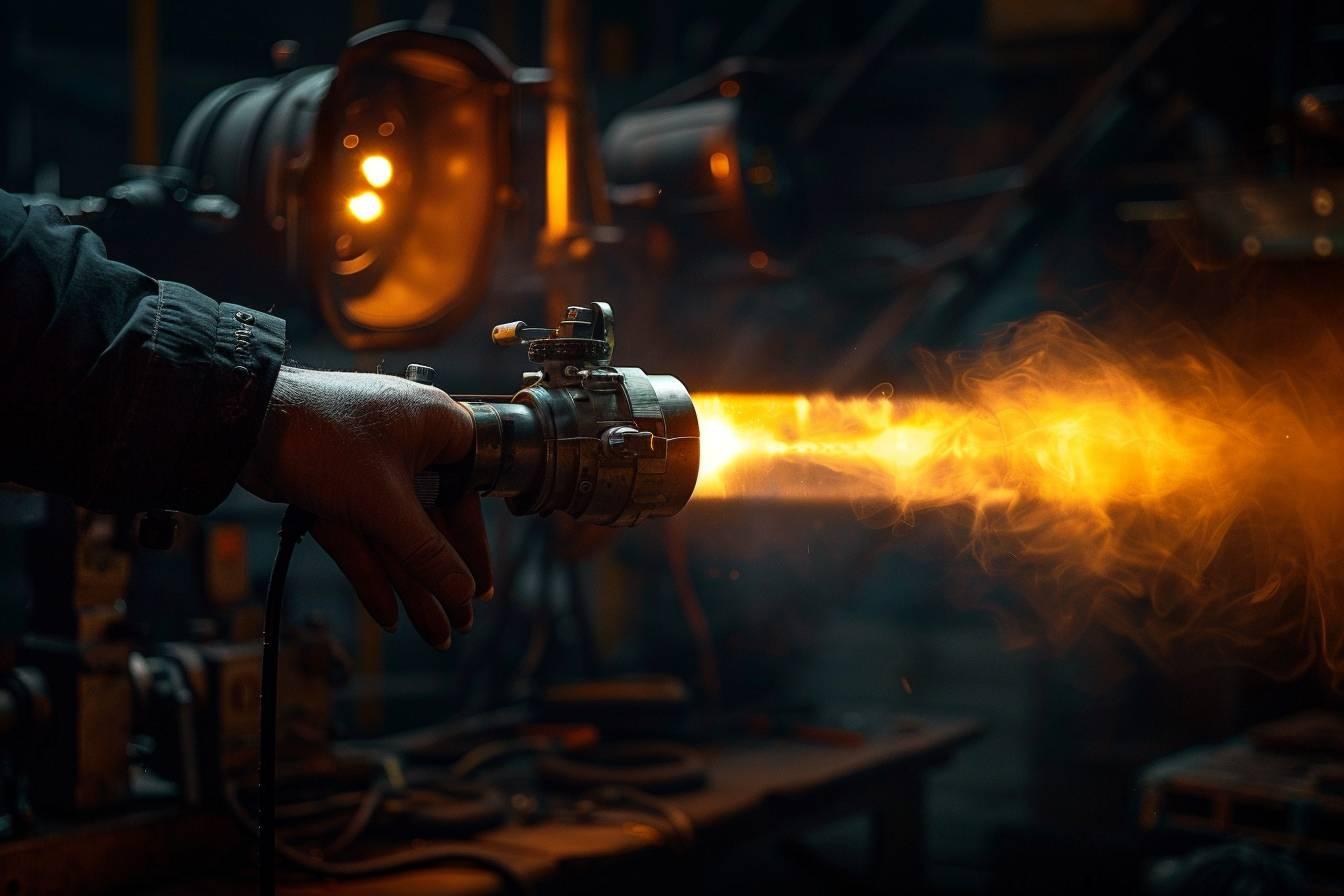Professional stage lighting is essential for creating a captivating atmosphere at spectacular events. Whether it’s a concert, a play or an enchanting show in an unusual location, lighting plays a crucial role in the audience’s experience. The latest innovations in LED technology have revolutionized the industry, offering more versatile and cost-effective options. This guide will help you navigate the complex world of scenic spotlights to make the wisest choice for your lighting needs.
Types of LED stage lights
The LED spotlight market offers an impressive variety of models, each adapted to specific uses. Understanding the differences between these types is essential to selecting the most appropriate equipment for your lighting project.
Wash spotlights are designed to diffuse uniform light over large surfaces. They are ideal for creating colorful atmospheres and quickly changing the mood of a stage. In contrast, beam projectors produce narrow, intense beams, ideal for dramatic effects and dynamic lighting effects.
Spotlights, on the other hand, offer a happy medium. They can be used to highlight specific elements of the stage, while retaining a certain flexibility. For performances requiring rapid changeover, moving-head spotlights are a must. Their ability to swivel and move opens up an infinite range of creative possibilities.
Here’s a list of the main types of LED stage lights:
- Wash projectors (wide beam)
- Beam projectors (narrow beam)
- Spotlights (multi-purpose)
- Moving head spotlights
- LED bars (for linear lighting)
The choice of spotlight type will depend on factors such as the size of the stage, the type of show and the desired effects. It’s often a good idea to combine several types to obtain a complete and versatile stage lighting solution.
Technical features to consider
When selecting a professional stage lighting fixture, there are a number of technical features that deserve special attention. These specifications will directly influence lighting quality and equipment versatility.
Light output, measured in lumens, is a determining factor. It indicates the intensity of the light emitted by the fixture. For large stages or environments with a lot of ambient light, high wattage is required. For example, a 10,000 lumen spotlight is ideal for medium-sized concert halls.
Color temperature is another crucial aspect. Measured in Kelvin (K), it determines the “warmth” or “coolness” of white light. Projectors offering an adjustable color temperature range (generally from 3200K to 6500K) are particularly prized for their versatility.
Color rendering index (CRI) is essential for applications where color fidelity is paramount, such as in theaters or video recording. A high CRI (90+) guarantees faithful color representation under projector lighting.
Here’s a summary of the most important technical features:
| Feature | Importance | Unit of measurement |
|---|---|---|
| Light output | High | Lumens |
| Color temperature | Medium | Kelvin (K) |
| Color rendering index (CRI) | High | Scale from 0 to 100 |
| Beam angle | Medium | Degrees |
| Power consumption | Average | Watts |
Beam angle is also an important criterion. It determines the width of the illuminated area. Spotlights with adjustable angles offer greater flexibility to adapt to different stage configurations.

Advanced LED spotlight features
Modern LED stage floodlights incorporate a number of advanced features that considerably broaden their range of applications. These technological innovations enable lighting designers to push back the limits of their creativity and deliver ever more impressive visual experiences.
DMX control has become an industry standard. This protocol enables each fixture to be precisely controlled from a central lighting console. The most sophisticated models offer up to 512 DMX channels, enabling extremely fine control of every fixture parameter.
Pixel mapping technology represents a significant advance. It transforms a set of projectors into a veritable low-resolution video screen, paving the way for complex, dynamic visual effects. This feature is particularly appreciated for concerts and large-scale events.
Integrated strobe effects are another sought-after feature. They create rapid, rhythmic flashes, adding a dynamic dimension to lighting. The ability to adjust the frequency and intensity of the flashes offers great creative flexibility.
Here’s a numbered list of commonly sought-after advanced features:
- Multi-channel DMX control
- Pixel mapping for video effects
- Built-in strobe effects
- Motorized zoom
- RGBW color mixing
- Automatic operating modes
- Wireless connectivity
Wireless connectivity is gaining in popularity, enabling more flexible control of projectors, particularly in temporary set-ups or hard-to-reach spaces. Some models even integrate Wi-Fi or Bluetooth functionality for programming and control via smartphone or tablet.
Selection criteria for optimum stage lighting
Selecting the ideal LED stage light requires careful consideration of a number of essential criteria. The relevance of each feature will largely depend on the context of use and the artistic objectives pursued.
Versatility is a major asset for many professional users. A projector capable of adapting to different types of event – from intimate theater to energetic rock concerts – represents a sound investment. Models offering a combination of wash, beam and spot functions are particularly prized for their flexibility.
Durability and reliability are crucial in a professional environment. Spotlights from well-known brands such as Martin, Clay Paky or Robe are often preferred for their robustness and longevity. It’s important to consider not only the initial cost, but also the long-term maintenance costs.
Energy efficiency has become an essential criterion, for both economic and ecological reasons. LEDs offer a significant advantage in this area, consuming less energy than traditional technologies while producing less heat. This translates into savings on electricity bills and reduced air-conditioning requirements.
Compatibility with existing systems is an often overlooked but crucial aspect. It’s vital to ensure that new projectors integrate harmoniously with existing equipment, both in terms of control (DMX compatibility) and accessories (gobos, filters, etc.).
Finally, technical support and the availability of spare parts are factors not to be underestimated. Responsive after-sales service and short delivery times for spare parts can make all the difference in the event of a breakdown, especially in the context of live events where every minute counts.
Ultimately, the choice of a professional stage projector results from a balance between technical performance, versatility, durability and budgetary considerations. A thorough analysis of the specific needs of each lighting project will help determine the priority criteria and select the most suitable equipment for creating memorable visual experiences.

